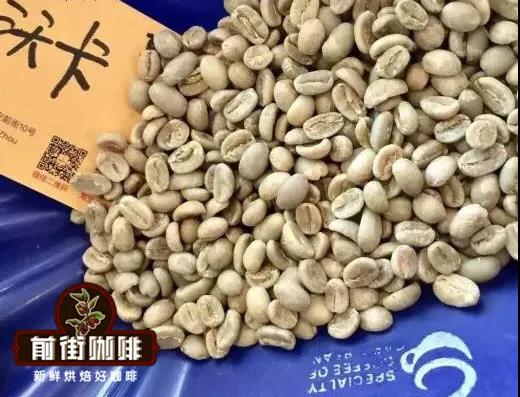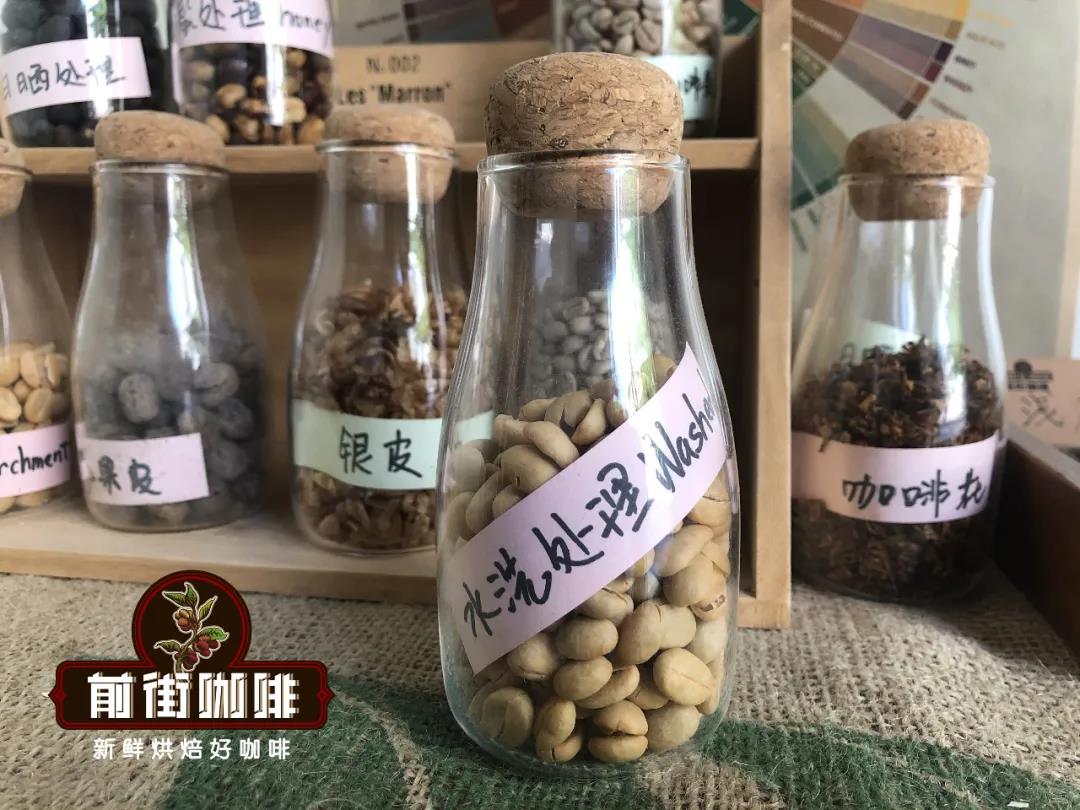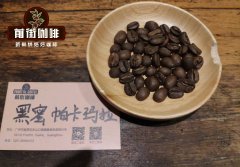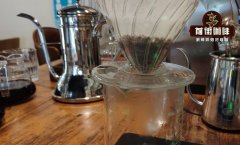Effect of brewing water temperature of coffee beans in Yejia Sheffivoka Cooperative on the flavor of Yega Chevoca coffee
Professional coffee knowledge exchange more coffee bean information please follow the coffee workshop (Wechat official account cafe_style)
Friends who have drunk Ethiopian coffee beans believe that many people have heard of Waka beans. This bean comes from the small town of Werka in southern Ethiopia. Through the cup test on the front street, it is believed that the Waka coffee beans have fresh and elegant floral fragrance, clean and bright sour characteristics.
Briefly review the producing area of Yega Xuefei.
Yirgacheffe
Yirgacheffe is located in the Gedeo region of southern Ethiopia. The well-known jurisdiction of this area is Yegashafi and Kochere, which is at an altitude of 1700-2100m, which is one of the highest coffee producing areas in the world.

Most of Yega Xuefei's coffee cultivation belongs to the pastoral coffee model, in which coffee farmers plant coffee trees near their living areas and harvest them during the harvest season. it is then sent to a nearby treatment plant built on water for unified treatment (or purchased by a middleman). In addition to a small number of plantations that have the strength to grow, pick and handle raw coffee beans independently, many coffee beans from different regions and varieties will be centrally processed by the processing plant and then sent to the auction house for official evaluation and grading. This is why we often see that Ethiopian coffee beans are named after processing plants or cooperatives.
Waka Cooperative
Werka
The Waka Cooperative is under the control of the YCFCU Cooperative Union. Founded in 2005, the Waka Cooperative is located in a remote area of the Yegashafi producing area, 75 kilometers away from the local coffee distribution center, Dilla, and the roads outside are in poor condition, with 20 kilometers of dirt roads from the cooperative to the main tarmac road. The cooperative is made up of 305 farmers, with a planting area of about 763 hectares and an annual output of nearly 460 tons. Because no chemical fertilizers or pesticides are used in coffee cultivation, Waka farmers have also obtained the Skal organic coffee certification recognized by the European Union.

Coffee is mainly grown by more than 700 local small farmers, using the traditional washing and sun treatment, because the flavor and taste of Waka coffee is outstanding with the characteristics of the producing area, which makes Waka coffee one of the representatives of Ethiopian boutique coffee. Why the rich flavor of Waka is so lovable, Qianjie believes that to a large extent, it is closely related to the cooperation of farmers, the careful harvest of coffee and the rigor of handling.
Coffee variety
Regular Ethiopian coffee drinkers should have heard of the original species of Heirloom. Most Ethiopian varieties are named after this name. In fact, it is because there are too many varieties in Ethiopia. It is like the natural gene bank in Arabica. On the one hand, there are many varieties, and it is difficult to identify and classify them. On the other hand, the Ethiopian government is reluctant to disclose the information of these varieties for the sake of protection, so it is collectively called the original species of Heirloom. It is precisely because of the large variety, so mixed planting, mixed harvest, Qianjie believes that this is the reason why Essel's beans are of different sizes.

Coffee bean treatment
Washed
Yega Sheffivoka coffee beans on the front street coffee shelves are treated with water washing. Put the screened coffee berries into the peeling machine, and initially remove the peel and pulp. Put the coffee beans with residual pectin into the water and let them ferment for about 24 hours. After fermentation, the raw coffee beans with parchment are washed in a flow tank to remove the pulp and pectin.

After washing, dry the coffee beans or dry the coffee beans with the help of a dryer to reduce the moisture content to about 12%, and finally remove the parchment of raw coffee beans. Qianjie Coffee thinks that the water-washed coffee has obvious acidity, good cleanliness, moderate touch and the most consistent quality of raw beans.

Producing area: Yega Sheffield Wauka Cooperative
Grade division: G1
Variety: Heirloom
Planting height: 1650 m ~ 1800 m
Treatment method: washing treatment method
Suggestion on coffee baking in Qianjie
Wauka's acidity is its characteristic, and in order to highlight this feature, Qianjie bakers recommend shallow baking. The heating up is relatively gentle, and the baking time is more than 10 minutes, giving sufficient time and temperature to dehydrate, so that chlorogenic acid can be degraded. If the degradation is not sufficient, there will be sharp acidity to drink, the tongue will feel uncomfortable, and there will be a bit of roughness; at the same time, if you continue to give firepower after an explosion, you will continue to caramelize, resulting in sweetness such as caramel, which is more solid and heavy, while the bright sour taste of fruit will wear out a little.

Yangjia 800N, bean 480g: furnace temperature to 200 degrees Celsius, throttle set 3 degrees Celsius for 1 minute, adjust firepower 160 degrees, throttle unchanged, 149 degrees adjust firepower, reduce to 140 degrees, bake to 5: 10 ", temperature 151 degrees, bean surface turns yellow, grass smell disappears completely, dehydration is completed, throttle opens to 4 degrees. In the 8th minute, ugly wrinkles and black markings appeared on the bean table, and the smell of toast obviously changed to the smell of coffee, which can be defined as a prelude to an explosion. at this time, it is necessary to listen clearly to the sound of an explosion point, to 8: 53 "start to explode, the throttle remains the same, and the development time of an explosion is 1: 39. 45", put into the pot at 195 degrees.
Coffee cup test report on Qianjie
Qianjie Coffee will be tested within 8-24 hours after the sample beans are roasted. Baristas in front of the street generally use ceramic bowls with a capacity of 200ml, which will be marked with 150ml and 200ml marks. According to SCAA standards, the TDS of water is about 150ppm, TDs is too low will easily cause excessive extraction, too high will affect the taste and easy to lack of extraction, the water temperature used in the cup test is 94 °. The pass rate of 20 # standard screen (0.85 mm) controlled by grinding degree is 70% Mel 75%. Ratio: 11 grams of coffee powder and 200 milliliters of hot water, that is, 1VR 18.18, so that the concentration of the extract is exactly within the range of 1.15% Murray 1.35% gold cup, and the soaking time is 4 minutes.

Dry fragrance: flower scent, citrus
Wet fragrance: citrus, lemon
Flavor: citrus, lemon, kumquat, white grape juice, soda sweetness
Experience of brewing coffee in Qianjie
Qianjie coffee was brewed and compared with three values of 86 ℃, 90 ℃ and 94 ℃ respectively.
In addition, try to keep other parameters consistent, use HarioV60 filter cup to brew, the ratio of water to powder is 1:15, the amount of coffee powder is 15g, and the grindness is BG#6m (the pass rate of Chinese standard No. 20 sieve is 80%).
The method of flushing and cooking is the same, all are consistent, using segmented extraction technique, 30g water is steamed for 30s, small water is injected around the circle to 125g and then segmented, when the water level is about to expose the powder bed, continue to inject water to 225g to stop, (the time of steaming starts) the extraction time is 220g 39th 00 ".

87 ℃ cooking flavor: the taste is lemon and tea, the acidity is obvious, the taste is round and the overall level is thin.
90 ℃ cooking flavor: lemon, plum and Tieguanyin are imported. Under the change of temperature, the caramel taste is obvious, the acidity is bright, and the taste is obvious.
94 ℃ cooking flavor: imported lemon and berries with obvious acidity, mellow and full-bodied tea.
Through three different water temperatures, the flavor of 90 ℃ can best reflect the bright acidity and refreshing tea feeling of Yejia Shifeiwaka coffee beans. 88 ℃ is weak and the flavor is not strong enough, while 94 ℃ enhances the mellow feeling, but lacks the brightness of acidity.
For more boutique coffee beans, please add private Qianjie coffee on Wechat. WeChat account: kaixinguoguo0925
Important Notice :
前街咖啡 FrontStreet Coffee has moved to new addredd:
FrontStreet Coffee Address: 315,Donghua East Road,GuangZhou
Tel:020 38364473
- Prev

The flavor characteristics of coffee in El Salvador introduce which coffee in El Salvador is the most famous.
El Salvador is the smallest and most densely populated country in Central America. It is also a world-renowned coffee producer. Coffee has been growing rapidly since the middle and late 19th century and has been an important contributor to El Salvador's economy for 100 years. However, coffee production in El Salvador has been declining since the 1980s and now accounts for less than 2 per cent of total exports. Still, it's now
- Next

Roasting adjustment and extraction adjustment of raw coffee beans what are the effects of soft and hard water on the extraction of coffee
98% of coffee is water, while 94-95% of a cup of espresso is water. So, in the whole coffee equation, water is an extremely important ingredient. In many cases, it is always ignored, so does the roasting and extraction of coffee also need to be adjusted in different drinking environments? How does water quality affect the taste of coffee? Water is
Related
- Beginners will see the "Coffee pull flower" guide!
- What is the difference between ice blog purified milk and ordinary milk coffee?
- Why is the Philippines the largest producer of crops in Liberia?
- For coffee extraction, should the fine powder be retained?
- How does extracted espresso fill pressed powder? How much strength does it take to press the powder?
- How to make jasmine cold extract coffee? Is the jasmine + latte good?
- Will this little toy really make the coffee taste better? How does Lily Drip affect coffee extraction?
- Will the action of slapping the filter cup also affect coffee extraction?
- What's the difference between powder-to-water ratio and powder-to-liquid ratio?
- What is the Ethiopian local species? What does it have to do with Heirloom native species?

